
A partial image of an animal is accompanied by the question, “What am I?” With a turn of the page, a larger look at the animal is shown, accompanied by “Where am I?” Another turn reveals the habitat. Handsome, highly realistic watercolors in a predictable format introduce animals, ending with a portrait of a boy “on the beautiful Earth.”
What Am I? Where Am I?

How big were the dinosaurs really? Though a deadly hunter, the microraptor “would barely be able to look a modern-day chicken in the eye.” Energetic illustrations contrast dinosaurs to things familiar and contemporary. Add animated text for a memorable look at size and prehistoric creatures.
How Big Were Dinosaurs?

From swamps to coral reefs, animals use camouflage. Lush, realistic, double page illustrations ask readers to find a particular number of animals in each habitat. With the turn of the page, the habitat is described and all animals are identified.
Hide-and-Seek Science: Animal Camouflage
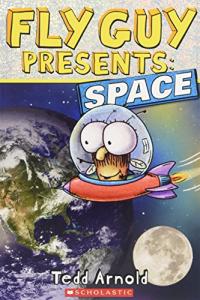
Buzz and his pet fly, Fly Guy, visit a space museum for a brief introduction to stars, planets and related concepts. Photographs and funny illustrations combine with easy-to- read language for a quick, accessible, informative trip shared by old friends.
Fly Guy Presents Space

A vacationing family sees many different types of boats and ships as well as what they carry. Young readers will find lots to explore as they travel over the waters in this large, highly pictorial journey.
Everything Goes by Sea

The children’s mother is away but finally they separate their dad from his newspaper to go out for milk. When he returns with it, father regales the narrator and his sister with his adventures that start when he goes out for milk and is taken by aliens but always saves the milk! Droll line illustration combines with exaggeration for a very funny tall tale.
Fortunately, the Milk

Everyone knows what a toilet is, but have you ever wondered what happens when a toilet is flushed? A brief introduction explains why toilets are needed (the digestive system), followed by lucid text and clear illustrations, with humorous touches, that detail what happens. This glimpse is sure to engage and heighten appreciation for the toilet.
Toilet: How it Works

Mummies and mummification in North America are introduced in short, readable text accompanied by illustration and photographs. Adapted from her longer book, the easy reader format makes a fascinating topic accessible to newly independent readers.
Mummy Mysteries: Tales from North America

Also see Discover More Reptiles (opens in a new window) from the same author. Questions, tidbits of information and full-color photographs all in an appealing format are perfect to dip and out of for information about the subjects in this series. Each title includes a table of contents, an index and even a glossary of words plus the potential to find out more online.
Discover More Weather

A group of movie-making monsters introduce the concepts needed to make a 3-dimensional film: width, height, depth. Related ideas and vocabulary follow (e.g., circumference, area, etc.) also presented with the same light touch. Flat, silly-but-colorful monsters lead the exploration to its conclusion.
Perimeter, Area and Volume: A Monster Book of Dimensions

A billion is a big number, bigger than a million. “It’s written like this: 1,000,000,000 — one followed by nine zeroes.” There aren’t even that many hairs on your head! Colorful illustrations and child-friendly comparisons bring these huge numbers into clearer focus in both words and numerals enhanced by bright, cheery illustrations.
Millions, Billions and Trillions: Understanding Big Numbers

Intriguing questions introduce the notion of possibility and its opposite which leads to the introduction of mathematical probability. Activities and games to test the chances of something happening involve coins, cards and more to bring the concepts into clear, recognizable and highly appealing focus.
That’s a Possibility: A Book About What Might Happen

Paul Erdos grew up in Hungary and was always an unusual child. He enjoyed numbers, was inept at everyday activities (like tying his shoes), and hated rules but grew up to be a famous mathematician. Witty illustrations and a fluid narrative (which imbeds mathematical language), and fascinating author and illustrator notes introduce this mathematically gifted man.
The Boy Who Loved Math: The Improbable Life of Paul Erdos

Math is not only all around but everyday goings-on make thinking mathematically fun. Activities of varying difficulty (wee ones, little kids, big kids) use the familiar — from dogs to ketchup — to present intriguing math questions to solve, all humorously illustrated. Answers are discreetly placed on each page with additional information for adults at the end.
Bedtime Math

Charles Darwin came across a distinctive frog in Chile during his ventures on the Beagle. The exceptional characteristics and the mysteries it created are presented in engaging text, photographs and notable, realistic collage illustrations. Additional resources are included.
The Mystery of Darwin’s Frog
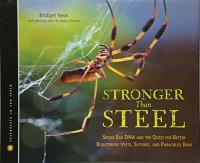
The strength of Spiderman’s web wasn’t far from reality. Biologist Randy Lewis’ work proves it. A highly readable text and captivating photographs make a complicated topic, related issues, and current research understandable for sophisticated readers of all ages.
Stronger than Steel
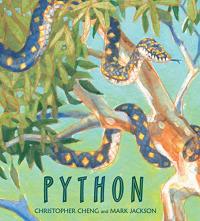
Like most snakes, pythons are often vilified. Realistic watercolors, however, of a Diamond Python (native to Australia) and informative text present a slice of her life from warming in the sun to hatching eggs — and, of course hunting and eating.
Python
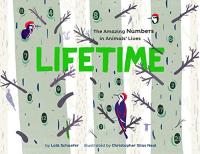
In one lifetime, creatures presented will grow or show one behavior repeatedly. Limited text combines with textured illustration to reveal these estimates from one papery spider egg sac to a thousand baby seahorses. Animal and math information conclude this unique glimpse of animals.
Lifetime: The Amazing Numbers in Animal Lives

Meet a panda, moon bear, sloth bear, sun bear, and other kinds (plus a teddy bear) in simple rhyming text and gentle illustrations. Bear facts and where to find additional information conclude this easy informational picture book.
If You Were a Panda Bear

Rhythmic text and lush illustrations invite young readers (or listeners) to eat like a bear from April until midwinter. Textured illustrations and more thorough backmatter conclude this engaging introduction to brown bears and their habitat.
Eat Like a Bear

Bats come in different sizes with different characteristics but each serves a particular purpose. Crisp photographs and lucid writing provide a riveting introduction to these often maligned creatures.
Bats: Biggest! Littlest!
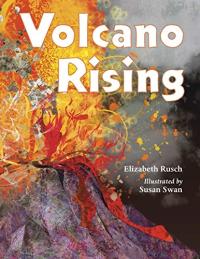
Volcanoes erupt on land and in the sea and are found all around the world. Eruptions are both “creative and destructive” but all start with “gooey rock called magma.” Volcano facts are combined with specific locations and striking, textured collages for an absorbing introduction to a fascinating natural phenomenon.
Volcano Rising

As a child, he was a late talker but as he grew up, Albert Einstein never stopped asking questions. The man whose ideas and questions changed the world is presented in engaging, child-like illustrations and easy but surprisingly informative text.
On a Beam of Light: A Story of Albert Einstein
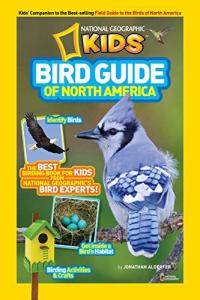
This handsome book invites readers to look at birds while learning about their habits and habitats; clearly organized by region and illustrated with illuminating photographs for identification. Easy activities, positive actions, and additional resources are also included.
